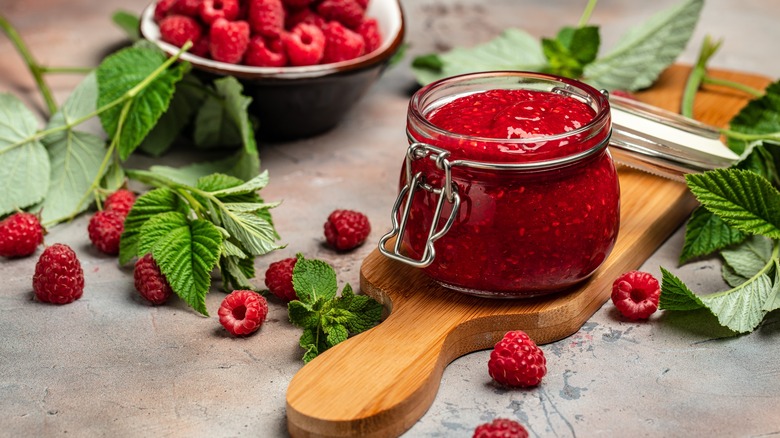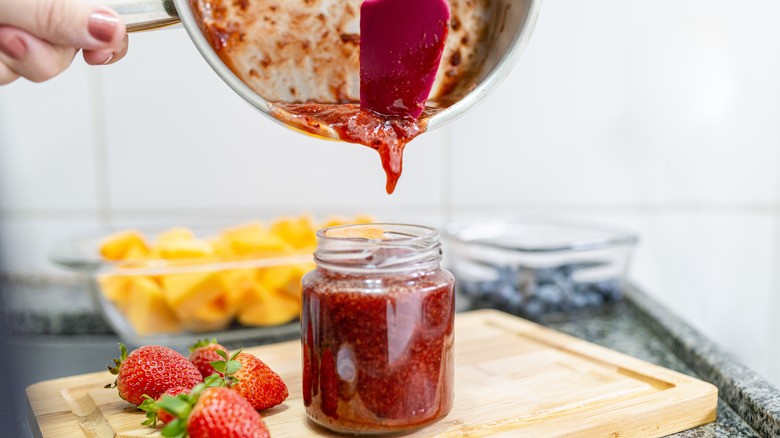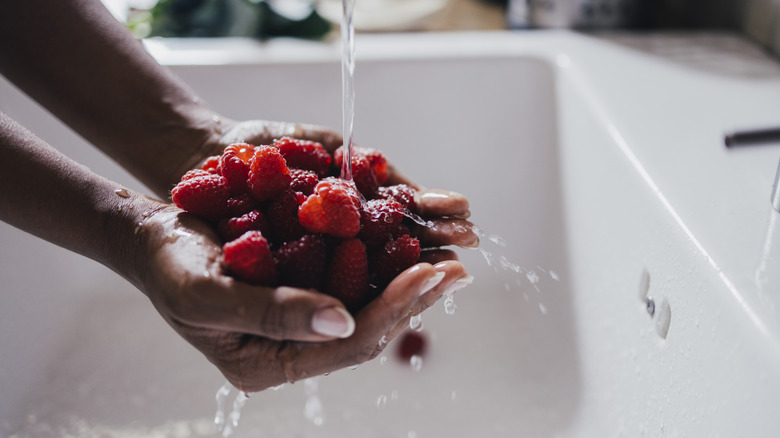Don't Toss That Overripe Fruit, Whip Up Some Jam Instead
Juicy, sweet, and nourishing, fruit makes a satisfying and simple snack at any time of day — at least when you can catch it at its fleeting peak. Unfortunately, like many of the earth's fine foods, the lifespan of most fruits is limited. Missing that window of freshness often means throwing the precious produce away, which can feel like tossing out your hard-earned dollars, too. However, losing their vibrant color and firm bite shouldn't automatically banish fruit to the trash bin. Thanks to their versatile properties, there are many easy ways to put them to use, even when just past their peak. One of the easiest and most gratifying is to repurpose your overripe fruits (particularly stone fruits and berries) by turning them into homemade jams.
After all, jam is arguably one of the best forms that fruit can take. Its spreadable consistency makes it a perfect topper for toast or crackers and cheese. Furthermore, it is long-lasting; an opened jar can live in the fridge for up to half a year, according to the USDA.
Why jam?
The thought of making it from scratch may be intimidating to an average jar buyer, but with overripe fruit on hand, the process is nearly foolproof. Unlike jelly, which is made by gelatinizing fruit juice, most jams merely require chopping the whole fruit into small pieces and adding some sugar and other flavor-enhancing aromatics. Stone fruits, like plums, work particularly well as jam bases, as they are high in pectin – a natural congealing agent. Some berries are higher in pectin, like cranberries and blackberries. Low-pectin berries (e.g., blueberries and raspberries) will work but produce a smaller yield and a less firm texture. Because pectin levels decrease as fruits ripen, consider adding powdered or liquid pectin to help your overripe berry jam firm up.
Since the fruits are heated and flavored in the jam-prepping process, they do not have to be at optimal ripeness to serve as a sufficient jam base. As long as they are not overripe to the point of smelling fermented (which is when they lose their acidity in addition to pectin), there is no reason an older fruit should not suffice.
The pursuit of reducing food waste
Jam is not just a delicious way to use up your fruit but also a worthy way to cut down on waste. In the United States alone, about 119 billion pounds of food are thrown away each year, creating costly economic, social, and environmental impacts. With its ever-so-elusive freshness, it is no surprise that produce is the food that Americans waste the most.
What's more, some items can leave a significant dent in your grocery bill, depending on your fruit-purchasing preferences. Wild blueberries, for instance, sell at almost double the price per pound as the standard processed variety, but some shoppers may prefer them nonetheless for their distinctly sweeter flavor and snappier texture. It would be a shame to miss out on getting your money's worth of your favorite fresh fruit.
There are, of course, other ways to help fruits last longer. Avoiding making certain mistakes when storing your fruit, for instance, can extend their life. Freezing is also an easy way to keep fruit out of the trash. For a straightforward, delectable solution, though, homemade jam is ideal.


